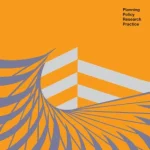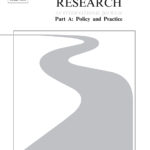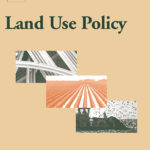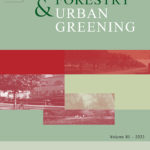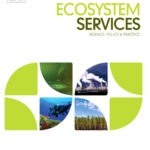
Mitigation of Concurrent Flood and Drought Risks Through Land Modifications: Potential and Perspectives of Land Users
The systematic review on land modifications for the flood and drought risk mitigation and motivations of land users to undertake these modifications.
Abstract: Modifications to land can serve to jointly reduce risks of floods and droughts to people and to ecosystems. Whether land modifications are implemented will depend on the willingness and ability of a diversity of actors. This article reviews the state of knowledge on land modification use in areas exposed to dual hydrologic risks and the land owners, managers, and users who directly make decisions about action on lands they control. The review presents a typology of land modifications and explains how land modifications interact with the hydrological cycle to reduce risks. It then addresses the roles and perspectives of the land owners, managers, and users undertaking land modifications, summarizing theories explaining motivations for, as well as barriers to and enablers of, land modification implementation. The analysis reveals geographical differences in narratives on land modifications as well as knowledge gaps regarding variation across actors and types of land modifications.
Citation: Slavíková, L. a Milman, A. (2023). Mitigation of Concurrent Flood and Drought Risks Through Land Modifications: Potential and Perspectives of Land Users. Annual Review of Environment and Resources 2023, 48:1, 319-346. https://doi.org/10.1146/annurev-environ-110922-031849
Carsharing users’ behaviour and attitudes. The role of car availability in households
The article is devoted to the contribution of carsharing to pro-environmental behavior – it compares carsharing users who have their own car and those who do not.
Abstract: This paper provides insights into differences in carsharing users’ attitudes, motives for joining carsharing, and transport behaviour between users with and without another car at their disposal. It builds on revealed and stated data about members of the oldest carsharing company in the Czech Republic. Carsharing adopters without a car utilise shared cars more intensively than carsharing users with a car available in their household. On the other hand, unlike the second group, they drive fewer kilometres by car in total. The car availability in households also influences the shift in car use after joining carsharing. The sale of a car thanks to adopting carsharing is a factor leading to a decrease in overall car use. Those who have a car at their disposal within their household have a lower probability of decreasing kilometres driven after joining carsharing. Households without an additional car available seem to be less car-dependent on average than those utilising carsharing as a second or third car. They tend to be more environmentally conscious and more inclined towards policies supporting alternative modes and restricting private car use, although both groups share these beliefs. The findings open a debate over whether carsharing increases the legitimacy of restrictive transport measures against private car ownership and use.
Citation: Vejchodská, E., Brůhová Foltýnová, H. & Rybičková, A. (2023). Carsharing users’ behaviour and attitudes. The role of car availability in households. Transportation. https://doi.org/10.1007/s11116-023-10386-0.
Download: ↓ Carsharing users’ behaviour and attitudes. The role of car availability in households.
Will COVID-19 accelerate telecommuting? A cross-country evaluation for Israel and Czechia
The article investigates the effects of the COVID-19 pandemic on commuting and working from home and whether the effects differed between Czechia and Israel.
Abstrakt: The COVID-19 crisis has forced many people to work from home, rather than at their regular workplace. This paper aims to assess the impact of the pandemic on telecommuting and commuting behavior after the end of the crisis: Will people embrace teleworking and reduce commuting, even to some extent, or will they resume their pre-pandemic work patterns? This study, implementing a cross-country survey from Israel and Czechia, combines data regarding revealed preferences about work habits before and during the pandemic and stated intentions data regarding anticipated work patterns when life returns to “normal” after the pandemic. Two models were used for the data analysis, one addressing factors that affect the increased/decreased teleworking trend and the other addressing factors that affect the frequency of actual commutes. The results reveal that most respondents (62% in Israel and 68% in Czechia) will maintain the same telecommuting/working from home balance. About 19% of respondents in both countries expressed their intention to reduce the number of commuting days, while 6% stated they would increase out-of-home days. However, these estimates rely only on workers’ expectations not accounting for employers’ point of view and other constraints they may have. Not accounting for potential bias, a moderate reduction of 6.5% and 8.7% (in Israel and in Czechia, respectively) in the number of commuting trips is expected in the post-pandemic era. The anticipated decrease in commuting days is accompanied by an increase in teleworking: from 10% to 14% among those who work more than 20 h a week (in both countries) and a drop in the rate of those who telework five hours or less a week (down from 73% to 63% in Israel and from 76% to 70% in Czechia). Self-employment, travel time to work, working solely on premise during the lockdown, and personal preferences regarding telework versus working away from home were found to significantly contribute to a decrease in the number of commuting days and to an increase in teleworking. An interesting finding is the high probability of increased teleworking among people who teleworked for the first time during the lockdown or who increased their teleworking time during the lockdown. This indicates that the teleworking experience due to the pandemic has enabled some people to view working from home as viable. Although, overall, the change in working habits does not seem dramatic, our results suggest that hybrid schemes for combining on premise and telework are expected to be adopted by some sectors.
Citation: Kogus A. et al. (2022). Will COVID-19 accelerate telecommuting? A cross-country evaluation for Israel and Czechia. Transportation Research Part A: Policy and Practice, 164 (2022), pp. 291-309, https://doi.org/10.1016/j.tra.2022.08.011
Download: ↓ Will COVID-19 accelerate telecommuting? A cross-country evaluation for Israel and Czechia
What benefits are the most important to you, your community, and society? Perception of ecosystem services provided by nature-based solutions
This article conducts a review of 153 scientific publications, investigating ecosystem services provided by nature-based solutions and individual, community and society preferences for these services.
Abstract: Ecosystem services (ES) provided by nature-based solutions (NBS) have been examined using various data collection techniques and preference elicitation methods to understand what ES are important to human well-being. This article provides a systematic review of 153 scientific publications, with a focus on data collection techniques and perspectives of well-being used when eliciting preferences toward multiple ES provided by NBS. ES provided by urban parks, urban trees, and community gardens are the most commonly examined; however, generally specified NBS such as “green spaces” or “green infrastructure” prevail. The review further shows that the questionnaire surveys is the dominant technique for bringing evidence about the most preferred ES, followed by semi-structured interviews and workshops. Only a limited number of studies use revealed or stated preference methods as a part of data collection efforts such as a choice experiment or contingent valuation. Additionally, the review defines three different perspectives of well-being considered but rarely discussed in existing studies: individual; community; and society well-being perspectives. As the concept of well-being is hardly discussed in NBS literature and still depends on a large degree of subjectivity, this review highlights the need for future research that looks more deeply at individual, community, and social well-being, which is influenced differently by the implementation of NBS.
Citation: Hekrle M. (2022). What benefits are the most important to you, your community, and society? Perception of ecosystem services provided by nature-based solutions. Wiley Interdisciplinary Reviews: Water, 9(6), e1612. https://doi.org/10.1002/wat2.1612
Costs of achieving emission limits in coal-burning power plants under the recent best available techniques regulation amendment: Evidence from national microeconomic data
Paper introduces an innovative approach to the economic assessment of proportionality in meeting emission standards
Emissions limits for coal-burning power plants are gradually being tightened around the world, with additional requirements and consequently significant costs placed on existing power plants. Design that conforms to regulatory requirements require credible estimation of the associated abatement costs. However, the existing methods for estimating abatement costs do not estimate those costs using microeconomic data or take the need to retrofit current abatement technologies into sufficient consideration. Therefore, they fail to calculate the actual costs of compliance accurately and thus are not suitable for assessment of cost proportionality, which is the key principle of regulatory design. This paper introduces a straightforward and innovative methodological approach to quantification of abatement costs that can reflect the real-world situation at an individual power plant and allows assessment of proportionality in meeting emission standards. The approach is based on collection of detailed data at the level of individual plants and on the comparison of costs associated with various levels of emission reduction in defined scenarios. The approach is demonstrated by application to nearly 50% of the installed thermal power capacity of the Czech Republic. The results show that recent European regulations for coal-burning plant emissions incur high abatement costs for most power plants, despite having very little effect in terms of emission reductions.
Reference: Vojáček, O.; Brabec, J.; Macháč, J. (2022). Costs of achieving emission limits in coal-burning power plants under the recent best available techniques regulation amendment: Evidence from national microeconomic data. Journal of Cleaner Production 352. https://doi.org/10.1016/j.jclepro.2022.131600
Balancing the interaction between urban regeneration and flood risk management – A cost benefit approach in Ústí nad Labem
In urban planning CBA can act as a decision support, rather than making, tool identifying gaps that need to be filled.
Urban areas are hot spots of flood risk due to how urban development concentrates people and assets into hazard prone areas, reinforcing negative externalities on the welfare of urban residents. Mitigating flood risk in urban environments, however, is challenging. This is not only because the process generating flood risk is complex, but the objectives of city planners, residents and/or developers are also multi-faceted. Therefore, there are various trade-offs to be considered. One such problem across many areas of Europe and beyond is how to regenerate declined urban areas, to improve the welfare, prosperity, and image of the city. However, in turn, many areas within these cities will see this activity being traded-off against increased flood risk. Cost-benefit analysis represents a useful approach for assessing this trade-off, as a decision-support tool. In this paper we present an exploratory cost-benefit analysis of a potential urban regeneration project within the city of Ústí nad Labem (Czechia) that seeks to highlight the potential magnitude of such trade-offs that need to be more often actively considered as a core, rather than peripheral, element of urban regeneration. We present an exploratory framework that can be expanded upon and integrated into wider regeneration visions.
Reference: Hudson, P.; Raška, P.; Macháč, J.; Slavíková, L. (2022). Balancing the interaction between urban regeneration and flood risk management – A cost benefit approach in Ústí nad Labem. Land Use Policy 120. https://doi.org/10.1016/j.landusepol.2022.106276
Exploring public preferences and preference heterogeneity for green and blue infrastructure in urban green spaces
Which form of green and blue infrastructure elements (nature-based or semi-natural) is preferred by residents of the medium-sized Czech city of Liberec?
Green and blue urban infrastructure (GBI) has many positive functions often not recognised by residents (e.g., microclimate regulation, water retention, etc.). The question for urban planners who are aware of these functions when planning new GBI elements or revitalising existing GBI is how much they need to account for the preference heterogeneity of locals, who typically consider only aesthetic and recreational value. This study uses data from a discrete choice experiment among residents of the medium-sized Czech city of Liberec to reveal which combinations of nature-based or semi-natural GBI and recreational facilities respondents prefer and how strong their preferences are in terms of their willingness to pay. Overall, study respondents preferred nature-based GBI to semi-natural ones. A mixed-latent class model identified two groups of respondents who differ in preferences, trade-offs, and socio-demographic characteristics: (i) mostly older educated women who prefer nature-based elements and enjoy park infrastructure; (ii) mostly less educated men who dislike urban gardens and semi-natural streams and do not value park infrastructure. Based on the results, we recommend that spatial planners and green space managers design and implement more nature-based elements in Liberec, which are in line with the respondents’ preferences.
Reference: Macháč, J.; Brabec, J.; Arnberger, A. (2022). Exploring public preferences and preference heterogeneity for green and blue infrastructure in urban green spaces. Urban Forestry & Urban Greening 75. https://doi.org/10.1016/j.ufug.2022.127695
Serious gaming in flood risk management
How serious gaming can contribute to ongoing discussions concerning the shift to more holistic and governance-based flood resilience perspectives?
Serious gaming is increasingly used to explore important real-world problems and a growing number of serious games are addressing flood-related issues. However, there has been limited synthesis of these attempts and their contributions to the ongoing shift toward a more holistic and governance-based flood resilience perspective in flood risk management (FRM). This international review collates and analyses these attempts in order to develop a knowledge base of serious gaming in the field of FRM. It contains 37 games that were developed with different rationales that include engaging players in the topic of FRM, supporting practice by exploring future options through collaboration, improving communication of FRM, as educational tools, and to collect research data. The gameplay countries and player characteristics, game characteristics, relevance to FRM, game rationales, and collection of data are explored in this paper. Identified serious games provided an unconventional and entertaining approach to engage stakeholders on flood-related issues. The review analysed the serious games in light of the shift toward flood resilience and identified limitations in the documentation of serious games and their potential in understanding the longer-term impacts of gameplay on players. Furthermore, the vast majority of reviewed games were played in a single country and missed out on understanding the cultural production and perspectives of FRM that could support cross-cultural learning and inspiration for future FRM strategies. Overall, the review identified an important role for serious games in the shift toward governance and the adoption of more holistic flood resilience perspectives.
Reference: Forrest, S. A.; Kubíková, M.; Macháč, J. (2022). Serious gaming in flood risk management. WIREs WATER 9(4). https://doi.org/10.1002/wat2.1589
Factors Affecting Governance Innovations for Ecosystem Services Provision: Insights From Two Self-Organized Forest Communities in Czechia And Slovakia
Analysis of the role of self-organized forest communities in innovative forest governance and sustainable forest ecosystem services provision.
Abstract: Self-organized forest communities (FCs) have governed common forests in a sustainable way in Europe for centuries. In most Central and Eastern European countries, this tradition was interrupted by the communist regime in the second half of the 20th century. The social demand for non-provisioning forest ecosystem services (FES) is increasing nowadays and FCs could play a significant role in their provision. However, FCs are currently facing many challenges, e.g., climate change, loss of income or changing social values. The paper investigates (i) the role of self-organized FCs in innovative forest governance and sustainable FES provision and (ii) specific conditions and fostering/hindering factors affecting implementation of innovative forest governance schemes by FCs in CEE.
Factors influencing forest governance innovations in two FCs in Czechia and Slovakia were identified and discussed during workshops, focus groups and semi-structured interviews with their members and stakeholders. It was shown that self-organized FCs could play a pioneering role in implementation of innovations as they are open to novel solutions and have the ability to flexibly and collectively respond to new challenges. Emphasis on non-provisioning FES, cooperation of actors, strong leadership and introduction of financial compensations are key fostering factors. In contrast, factors related to institutional settings (e.g., current legislative environment) are perceived as hindering.
Citation and link: Louda, J., Dubová, L., Špaček, M., Brnkaláková, S., Kluvánková, T. 2023. Factors affecting governance innovations for ecosystem services provision: Insights from two self-organized forest communities in Czechia and Slovakia. Ecosystem Services, 59, 101497. https://doi.org/10.1016/j.ecoser.2022.101497
Land Policy for Flood Risk Management—Toward a New Working Paradigm
Recommendations for better flood risk mitigation via land use changes
Abstract: Flood risk management (FRM) aims to integrate necessary technical measures with environmental and societal approaches. Focusing on the process and governance of how to plan, implement, and maintain solutions therefore becomes essential. Among the different stakeholders, landowners are a key group to be considered. This contribution elaborates on the interconnections between land policy, FRM and private land ownership. It is based on the European COST Action network LAND4FLOOD, which brings together academics and stakeholders from various disciplines and more than 35 countries. We argue for a less project oriented and more process oriented approach, a focus on land management and more emphasis on small-scale measures. This represents a break with some of the recent working paradigms of FRM.
Full citation: Potocki, K., Hartmann, T., Slavikova, L., Collentine, D., Veidemane, K., Raska, P., Barstad, J., Evans, R. (2022). Land Policy for Flood Risk Management—Toward a New Working Paradigm. Earth´s Future, 10, e2021EF002491.


